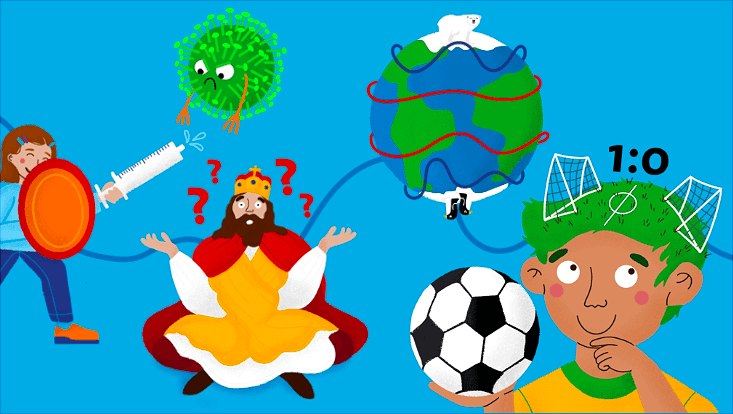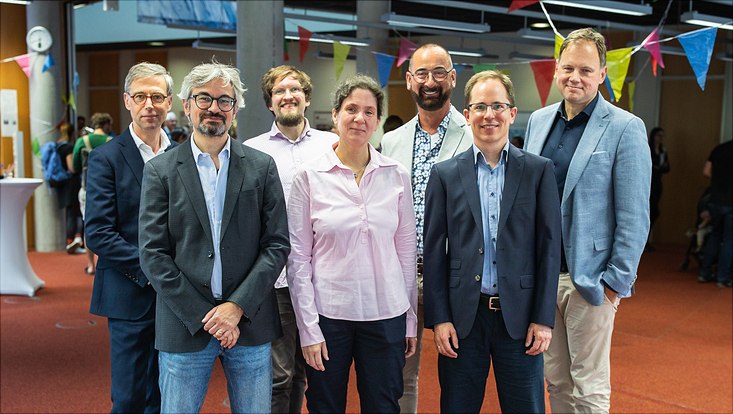Children’s University Lectures 2022: From Tiny Creepy Crawlies to Huge Dinosaurs
1 November 2022, by Anna Priebe

Photo: UHH/Vogiatzis
This year’s Children’s University Lectures start on Tuesday 1 November, with 2 interesting video lectures, one on the life of dinosaurs and one on endangered insects. Then, on 7 November, we head into the Audimax, the University’s biggest lecture hall. Every Monday, for 4 weeks, there will be a different lecture for all interested children between 8 and 12 years old.
There will be digital lectures on offer like last year, but after a 2 year hiatus, this year will be finally be offering lectures in person again. Working with the Reinhard Frank Stiftung, the ETV Kinder- und Jugendförderung and the children’s science magazine GEOlino, Universität Hamburg has put together an exciting and diverse program.
The series kicks off with two digital lectures
On 1 November, 2 video lectures will be released. Paleontologist Dr. Emanuel Tschopp explains in his lecture Vier Dinos namens Susi (Four dinosaurs called Susi) how 4 long-necked dinosaur skeletons from Wyoming (USA) came to Universität Hamburg, how research is being conducted on them, and why they are all called Susi. Insect researcher Dr. Martin Husemann then takes his young viewers on a journey through the world of insects, using Hamburg as an example, to show the variety of species and also the dangers they face in Das große Kabbeln—Wie geht es Käfer, Ameise und Biene? (The big scramble—how are our beetles, ants, and bees doing?).
The video lectures will remain online after the Children’s University Lectures 2022 are over, and are available from on the Children’s Lectures website at https://www.uni-hamburg.de/kinder-uni (in German).
From 7 November live at the Audimax
In the first live lecture in the Audimax on 7 November, human movement scientist Dr. Christian Spreckels explains what the thoughts and feelings of players have to do with the success of a soccer team in Werden Fußballspiele im Kopf entschieden? (Are football games won or lost in your head?). He does this by using insights into the fascinating world behind the scenes of professional soccer. Infection researcher Prof. Dr. Marylin Addo addresses a very current topic one week later on 14 November: Warum ein kleiner Piks gegen ansteckende Krankheiten hilft (Why a little pinprick can help against infectious disease) Together with the audience, she looks at why certain infectious diseases can spread so quickly across the world, how they are treated, and what role vaccination plays.
The second half of the Audimax lectures begins on 21 November with the historian Prof. Dr. Philippe Depreux, who takes us on a little trip back to about 1200 years ago. At the time, Charlemagne ruled over what is now Germany, France, Italy and other countries as well. Depreux explains who this great emperor was and what he meant for history in the lecture Wem gehört Karl der Große? (Who owns Charlemagne?). Finally, meteorologist Dr. Hartmut Borth provides some insights into the climate sciences. Often, climate change is hard to grasp, but his lecture Unsere Atmosphäre: Schutzhülle, Klimaanlage und Wasserautobahn (Our atmosphere: protective shield, air conditioning, and water highways) makes it easy to see how we can use climate models and super computers to understand how our atmosphere, and thus the weather, will change in the future, and what that will mean for humankind.
The live lectures start at 5 pm and last for approximately 45 minutes, in the Audimax at Universität Hamburg (Von-Melle-Park 4, 20146 Hamburg). The current coronavirus conditions for the City of Hamburg apply to all indoor events. You do not have to register in advance, but registration is recommended for large groups and school classes.
All information in the Children’s University Lectures and this year’s events is available at the Children’s University Lectures website (in German).


